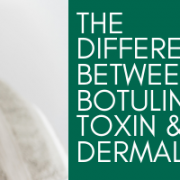Practitioners who are performing Botulinum Toxin and dermal filler treatments will soon be required to have proper licensing in place under a new law coming to the UK.
This new breakthrough within the industry has come into play due to the rise of “botched” treatments by injectors. It will soon be an offence for such aesthetic treatments to be performed with out the legal licensing required. The new licensing scheme hopes to protect the general public by practitioners needing to show a certain standard of understanding along with premises standards.
It was however noted by the health secretary that a large majority of the aesthetics industry “follow good practice” in regards to safety but believed it was time to think about the harm badly performed procedures can have.
“We’re doing all we can to protect patients from potential harm, but I urge anyone considering a cosmetic procedure to take the time to think about the impact on both their physical and mental health and ensure they are using a reputable, safe and qualified practitioner” – Sajid Javid, Health Secretory
The minister of patient safety, Maria Caulfield, also noted that the wide spread of images on social media has led to a rise in demand for aesthetic treatments. Which has resulted in unqualified practitioners advertising themselves to such clientele, resulting in high levels of complications.
“While these can be administered safely, we are seeing an unacceptable rise in people being left physically and mentally scarred from poorly performed procedures” – Maria Caulifield, Minister of Patient Safety.
The move follows the introduction of the Botulinum Toxin and Cosmetic Fillers (Children) Act, which came into force last October and meant people under 18 years of age would no longer be able to receive Botulinum Toxin and dermal fillers for cosmetic reasons.
‘The JCCP was delighted to receive confirmation that the Secretary of State is now minded to introduce a national system of licensing for non-surgical cosmetic procedures in England following his decision to introduce an amendment to the forthcoming Health and Care Bill.
The JCCP places patient safety and public protection at the heart of all of its activities and has campaigned relentlessly over the past four years for the implementation of a nationally approved system of licensing for the aesthetic sector underpinned by mandated standards for education and training for all practitioners” – The Professor David Sines from the JCCP (Joint Council for Cosmetic Practitioners)
The full scope and details of the new regulations will be determined via extensive engagement including a public consultation, the department has said which we will keep you up to date with.
Details on the public consultation on non-surgical cosmetic procedures are expected to be set out at a later date.
Find out more about our training courses here.
The Aesthetics Knowledge Hub is a great place for you to find answers to frequently asked questions. We recommend having a look at the Aesthetic Training Knowledge Hub. Here you will find out key information on the aesthetic industry.
















